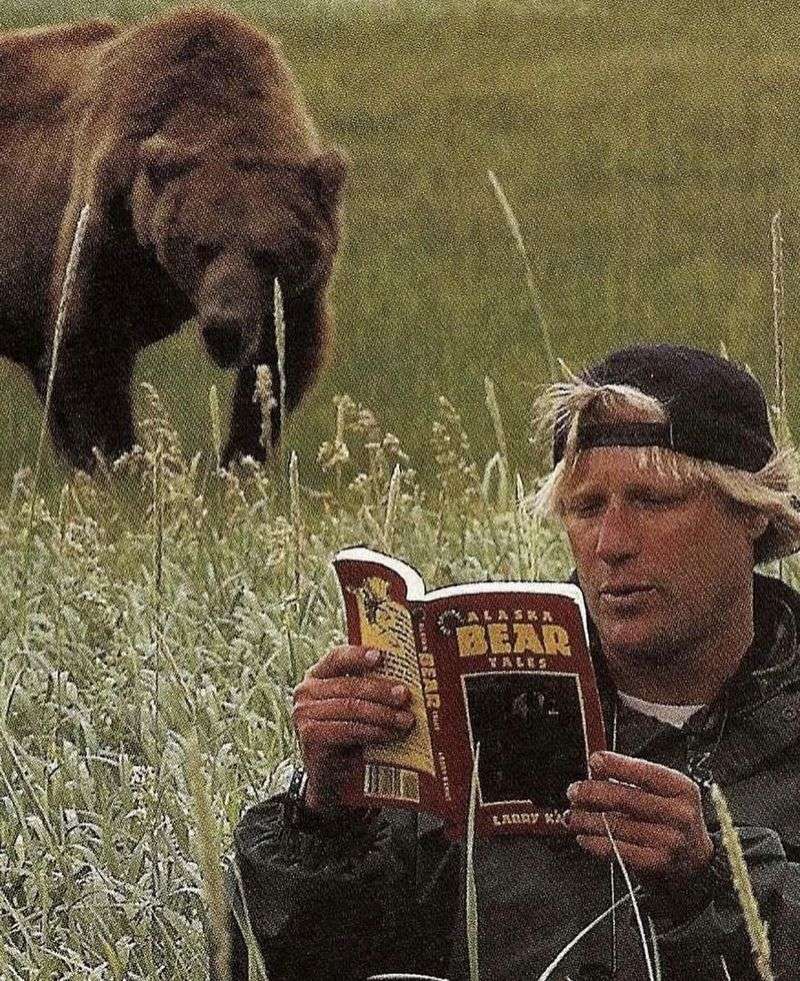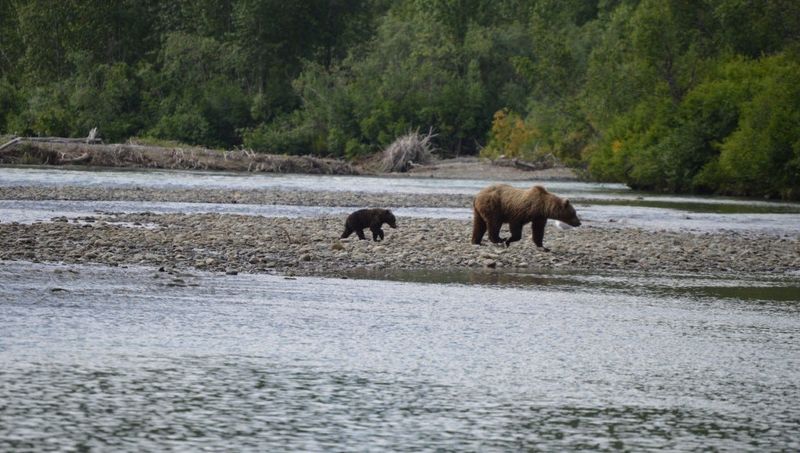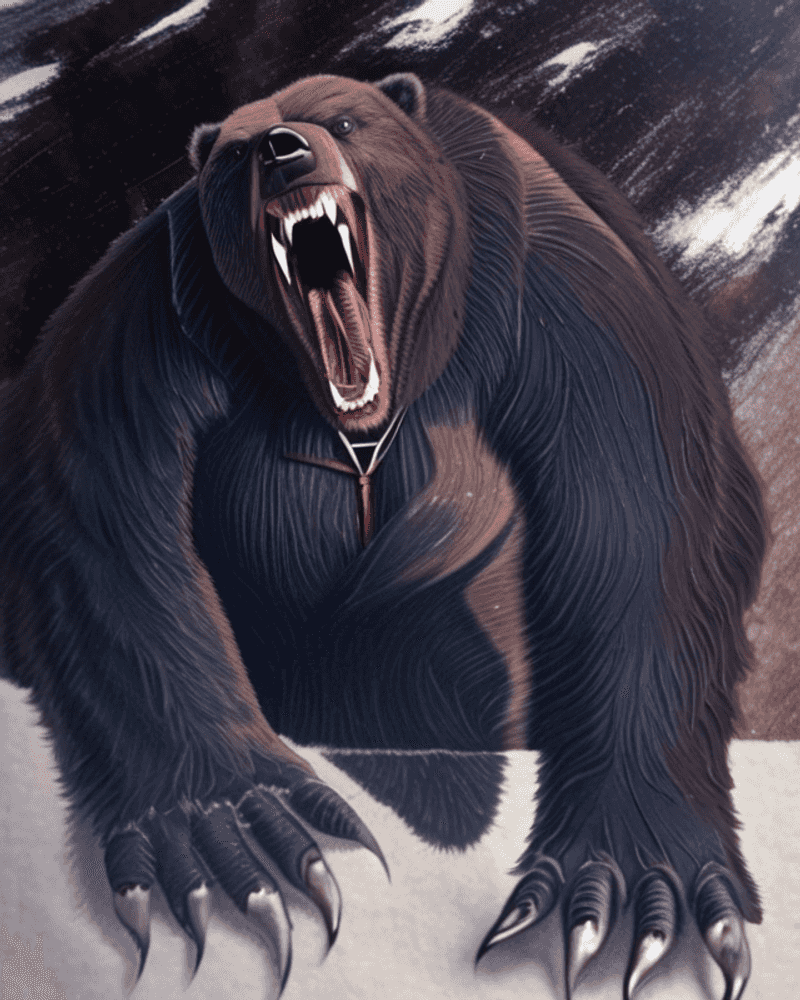Bears are magnificent creatures that usually avoid human contact, but when our paths cross unexpectedly, the results can be devastating. While bear attacks remain extremely rare, certain encounters have turned deadly when humans and these powerful predators meet in unfortunate circumstances. These seven documented cases represent some of the most tragic and shocking bear attacks in recent history, reminding us of the raw power of nature and the importance of wilderness safety.
1. The Grizzly Man Tragedy (2003)
Timothy Treadwell dedicated 13 summers to living among Alaskan grizzlies, believing he had formed a special bond with these massive predators. His girlfriend Amie Huguenard joined him during his final, fatal expedition in Katmai National Park.
The pair’s bodies were discovered after they missed a scheduled flight, with Treadwell’s wristwatch still recording the horrifying audio of their deaths. Park rangers later shot and killed the bear responsible.
This tragedy highlighted the dangerous consequences of anthropomorphizing wild animals. Despite Treadwell’s good intentions and years of seemingly peaceful coexistence, the line between human and predator ultimately proved impossible to erase.
2. Montana Trail Runner’s Fatal Encounter (2023)
A serene morning jog transformed into a nightmare when an experienced backcountry runner stumbled upon a grizzly near Yellowstone National Park. Without warning signs or aggressive history, the bear attacked with devastating force.
Wildlife officials determined the runner likely startled the bear at close range, triggering its defensive instincts. The victim had no chance to deploy bear spray or take evasive action.
This tragic case serves as a sobering reminder that even bears with no history of human aggression can become lethal when surprised. Running in bear country creates additional risk, as the motion can trigger predatory responses in these territorial animals.
3. Banff National Park Family Tragedy (2023)
A couple’s camping trip with their beloved dog in the Canadian Rockies ended in heartbreak when they encountered a mother grizzly with cubs. The defensive bear, acting on maternal instinct, attacked with devastating force when it perceived a threat to its young.
Parks Canada officials tracked and euthanized the bear after discovering the grim scene. Bear biologists noted that the presence of a dog likely escalated the confrontation, as bears often view canines as threats or competitors.
This devastating incident underscores the heightened danger of mother bears with cubs. Even experienced outdoorspeople can find themselves in peril when accidentally crossing paths with nature’s most protective mothers.
4. Japan’s Hokkaido Bear Rampage (1915)
The remote villages of Hokkaido became hunting grounds for a massive brown bear known as “Kesagake” during the harsh winter of 1915. Standing over 8.85 feet tall and weighing an estimated 750 pounds, this apex predator killed seven villagers in a reign of terror spanning multiple settlements.
Hunger drove the bear to unprecedented aggression as it systematically broke into homes, dragging victims into the wilderness. Local hunters eventually tracked and killed the bear after an intensive manhunt.
This historical rampage remains Japan’s deadliest recorded bear attack and inspired numerous books and films. The preserved remains of Kesagake can still be viewed at the Hokkaido Museum, a chilling reminder of this exceptional case of predatory behavior.
5. Alberta’s Predatory Black Bear Attack (2014)
Black bears rarely view humans as prey, making this 2014 Alberta tragedy particularly shocking. A mature male black bear stalked, killed, and partially consumed two campers in a calculated predatory attack that stunned wildlife experts.
Unlike defensive encounters, this bear exhibited deliberate hunting behavior. The victims had properly stored their food and followed standard wilderness protocols, yet still fell victim to this aberrant predator.
Wildlife officials who examined the bear’s stomach contents confirmed the predatory nature of the attack. This rare case serves as a stark reminder that while black bears typically avoid humans, individual animals can develop dangerous predatory behaviors that defy normal species patterns.
6. Glacier National Park Tent Tragedy (2016)
Under the cover of darkness, a food-conditioned grizzly approached a campsite in Glacier National Park where a solo backpacker slept peacefully. The horrifying attack that followed highlighted the dangers of bears associating humans with food sources.
Investigation revealed the bear had previously raided campsites for food rewards. Though the victim had properly hung his provisions away from his tent, the bear’s established behavior pattern proved fatal.
Park rangers tracked and euthanized the bear, confirming its identity through DNA testing. This heartbreaking incident reinforced the critical importance of food storage in bear country and the devastating consequences when bears lose their natural wariness of humans through food conditioning.
7. Yellowstone’s Protective Mother Attack (2011)
A scenic hike near Yellowstone’s Lake Village turned deadly when a 57-year-old man encountered a grizzly sow with cubs. Despite hiking with his wife and shouting to alert wildlife of their presence, the pair stumbled within the mother bear’s defensive perimeter.
The sow charged with stunning speed, focusing her attack on the male hiker while his wife played dead. Park biologists determined this was classic defensive behavior rather than predatory, as the bear was protecting her vulnerable young.
Park officials made the controversial decision not to euthanize the bear, recognizing she had acted naturally to defend her cubs. The incident reinforced the importance of carrying bear spray and hiking in groups of three or more in grizzly country.







